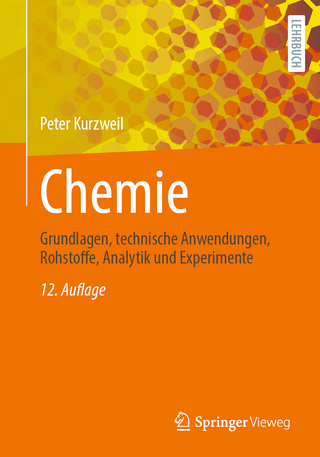
Lubricant Blending and Quality Assurance
CRC Press (Verlag)
978-0-367-78075-3 (ISBN)
Many people, including those involved in the manufacturing, marketing and selling of lubricants, believe that blending lubricants is simply a matter of putting one or more base oils and several additives into a tank of some kind and stirring them around to mix them. Blending lubricants that meet customers’ demands requires much more than this. The correct ingredients of the right quality need to be used in precisely controlled quantities. The ingredients need to be tested prior to blending and the finished products need to be tested following blending. The ingredients need to be stored and mixed under carefully controlled conditions. The finished lubricants need to be stored and packaged carefully and then delivered to customers correctly.
This book discusses all of these issues, describes the different types of equipment used to blend lubricants, provides guidance on how best to use this equipment, and offers tips and techniques to help to avoid problems. It focuses on liquid lubricants. Greases are not discussed, as their manufacture involves very different manufacturing procedures compared with those concerned with liquid lubricants.
The book starts with descriptions and discussion of the properties and characteristics of the main types of mineral and synthetic base oils, as well as the properties and characteristics of the main types of additives that are used in lubricant formulations. Criteria and methodologies used to design both new and upgraded blending plants are covered next. The types and operation of the equipment used in lubricant blending plants are described and discussed, together with a chapter on how to avoid problems before, during, and after blending. Testing and analysis of base oils, additives, and blended lubricants are covered in two separate chapters. Procedures for quality control and quality management in lubricant blending plants are also discussed in two separate chapters. Types of packages for lubricants are reviewed, together with methods for filling packages and methods for transporting lubricants in bulk. The storage of lubricants and supply chain management is also covered in depth.
David Whitby is Chief Executive of Pathmaster Marketing Ltd, a business development consultancy for the international downstream oil, gas and energy industries, which he founded in 1992. Pathmaster Marketing advises clients in the UK, France, Germany, Belgium, Denmark, Poland, the US, Canada, Israel, Saudi Arabia, Iran, South Africa, Brazil, Singapore, Malaysia and Australia on business planning, business strategy, market development and technology commercialisation. Specialist sectors include lubricants, fuels, new energies and speciality chemicals. An Australian by birth, David began his career with British Petroleum, as a process chemist at the Kwinana refinery in Western Australia. He worked for BP for 22 years in a number of management positions, including Marketing and Business Development Manager at Kalsep (an advanced separations company), Business Manager at BP Ventures, Project Leader for Industrial Lubricants at BP Research and Marketing Services Officer at Duckhams Oils. David was Programme Director for Lubricants Courses at the Oxford Princeton Programme (formerly the College of Petroleum and Energy Studies in Oxford), where he was responsible for planning the overall lubricants course programme and delivering several training courses each year. He ran the Advanced Lubrication Training Programme for the UK Lubricants Association (formerly the British Lubricants Federation.). He has written numerous papers and articles on lubricants and has chaired and lectured to international conferences and directed over 100 training lubricants courses in the UK, Canada, Germany, France, Belgium, Denmark, Switzerland, Poland, the Czech Republic, Hungary, Russia, Saudi Arabia, Jordan, Bahrain, Cyprus, Argentina, Brazil, South Africa, Singapore, Malaysia, Thailand and Australia. He also writes the bi-monthly "Worldwide" column for the US Society of Tribologists and Lubrication Engineers "Tribology and Lubrication Technology" magazine and is a contributor to "Lubes ‘n’ Greases" magazine.
1. Introduction. 2. Mineral Oil Base Oils; API Groups I, II and III: Properties and Characteristics. 3. Synthetic Base Oils; API Groups IV and V: Properties and Characteristics. 4. Lubricant Additives: Properties and Characteristics. 5. Lubricant Formulation and Ease of Blending. 6. Lubricant Blending Plant Design: Grassroots Plants and Upgrading Existing Plants. 7. Lubricant Blending Plant Equipment and Facilities and Their Operation. 8. Lubricant Blending Issues: Avoiding Problems. 9. Testing and Analysis of Base Oils and Additives in Blending Plants. 10. Testing and Analysis of Blended Lubricants. 11. Lubricant Product Quality Control. 12. Lubricant Packaging and Filling. 13. Lubricant Storage. 14. Product Quality Management.
| Erscheinungsdatum | 06.04.2021 |
|---|---|
| Verlagsort | London |
| Sprache | englisch |
| Maße | 156 x 234 mm |
| Gewicht | 430 g |
| Themenwelt | Naturwissenschaften ► Chemie ► Technische Chemie |
| Technik ► Maschinenbau | |
| ISBN-10 | 0-367-78075-5 / 0367780755 |
| ISBN-13 | 978-0-367-78075-3 / 9780367780753 |
| Zustand | Neuware |
| Haben Sie eine Frage zum Produkt? |
aus dem Bereich


